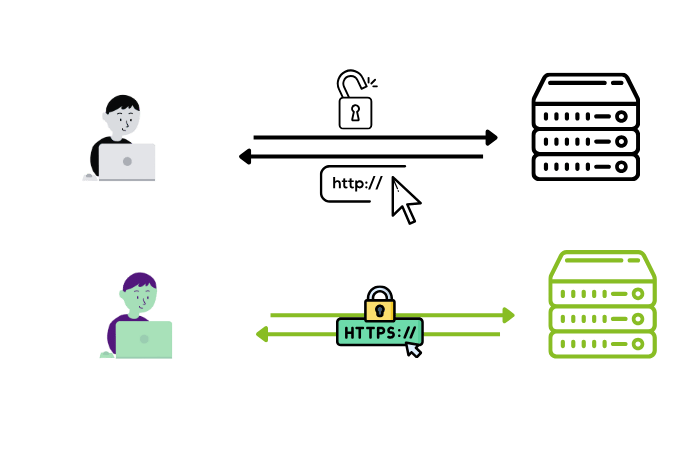For WordPress users, securing a website goes beyond just content management. SSL, TLS, HTTP, and HTTPS are not mere acronyms; they form the backbone of your site’s security and user trust.
This guide will delve into what these terms mean, their importance, and how they interconnect, ensuring your WordPress site is both secure and optimized for search engines.
What is SSL, TLS, HTTP, and HTTPS?
- HTTP (HyperText Transfer Protocol): This protocol forms the foundation of data communication on the web. It enables web browsers to fetch resources like HTML documents and facilitates information transfer across the internet.
- HTTPS (HyperText Transfer Protocol Secure): This secure extension of HTTP encrypts data transmission over a network. It relies on encryption protocols like SSL/TLS to protect sensitive information.
- SSL (Secure Sockets Layer): This security technology establishes an encrypted link between a server and a client. Although TLS has replaced SSL, many still reference SSL due to its historical significance.
- TLS (Transport Layer Security): This cryptographic protocol enhances security in network communications. It improves upon SSL by offering stronger encryption and authentication methods.
How They Connect and Why They Are Important

- Connection Between SSL, TLS, HTTP, and HTTPS: When users visit a website, their browsers transfer data to the server. HTTP handles this transfer, but it lacks security. To encrypt the data, SSL/TLS protocols work alongside HTTP, creating HTTPS. This secure protocol ensures data remains confidential and intact.
- Importance in WordPress: Enabling HTTPS on your WordPress site boosts SEO rankings, strengthens user trust, and prevents malicious actors from intercepting data. A secure WordPress site enhances credibility and protects sensitive information.
Technical Differences and Historical Context of SSL and TLS
SSL was the first widespread protocol used to secure Internet communications, but it had vulnerabilities that required improvements.
TLS developed as an upgrade to SSL, addressed these issues and added more robust security features, such as improved encryption algorithms and better support for modern web standards. Understanding these differences is crucial for anyone tasked with securing web communications.
Implementation Steps for WordPress Users
- Choose a Reliable Hosting Provider: Start by selecting a hosting provider offering SSL certificates. Companies like Bluehost and Hostinger provide free SSL certificates with their hosting plans.
- Install an SSL Certificate: Most hosting providers offer a one-click SSL installation. Alternatively, you can use free services like Let’s Encrypt or purchase one from Namecheap.
- Update WordPress Settings:

- Navigate to
Settings > Generalin your WordPress dashboard. - Change your WordPress Address (URL) and Site Address (URL) to use HTTPS.
- Navigate to
- Implement HTTPS Redirection: Use plugins like Really Simple SSL to automatically redirect all HTTP traffic to HTTPS, ensuring secure data transmission.
- Update Internal Links: Ensure all internal links use HTTPS. Plugins like Update URLs can help automate this process.
- Verify with Google Search Console: Once HTTPS is implemented, update your site’s address in Google Search Console to ensure proper indexing.
Conclusion
Securing your WordPress site with SSL, TLS, HTTP, and HTTPS is crucial for safeguarding user data, enhancing SEO, and building trust. By following the implementation steps and considering advanced insights, you can ensure your site is both secure and efficient.
FAQs
What is the difference between SSL and TLS in WordPress?
SSL is the older protocol used for encrypting data, while TLS is its more secure successor, offering improved performance and security features.
How can I fix mixed content errors in WordPress?
Mixed content errors can be resolved by ensuring all resources on your site are loaded over HTTPS. Plugins like Really Simple SSL can automate this process.
Why is HTTPS important for SEO on my WordPress site?
HTTPS is a ranking factor for search engines like Google. It signifies a secure and trustworthy site, which can lead to improved rankings and user trust.
How do I know if my WordPress site is secure with HTTPS?
Check for a padlock icon in the browser’s address bar. Tools like SSL Labs can also provide detailed reports on your site’s security status.



